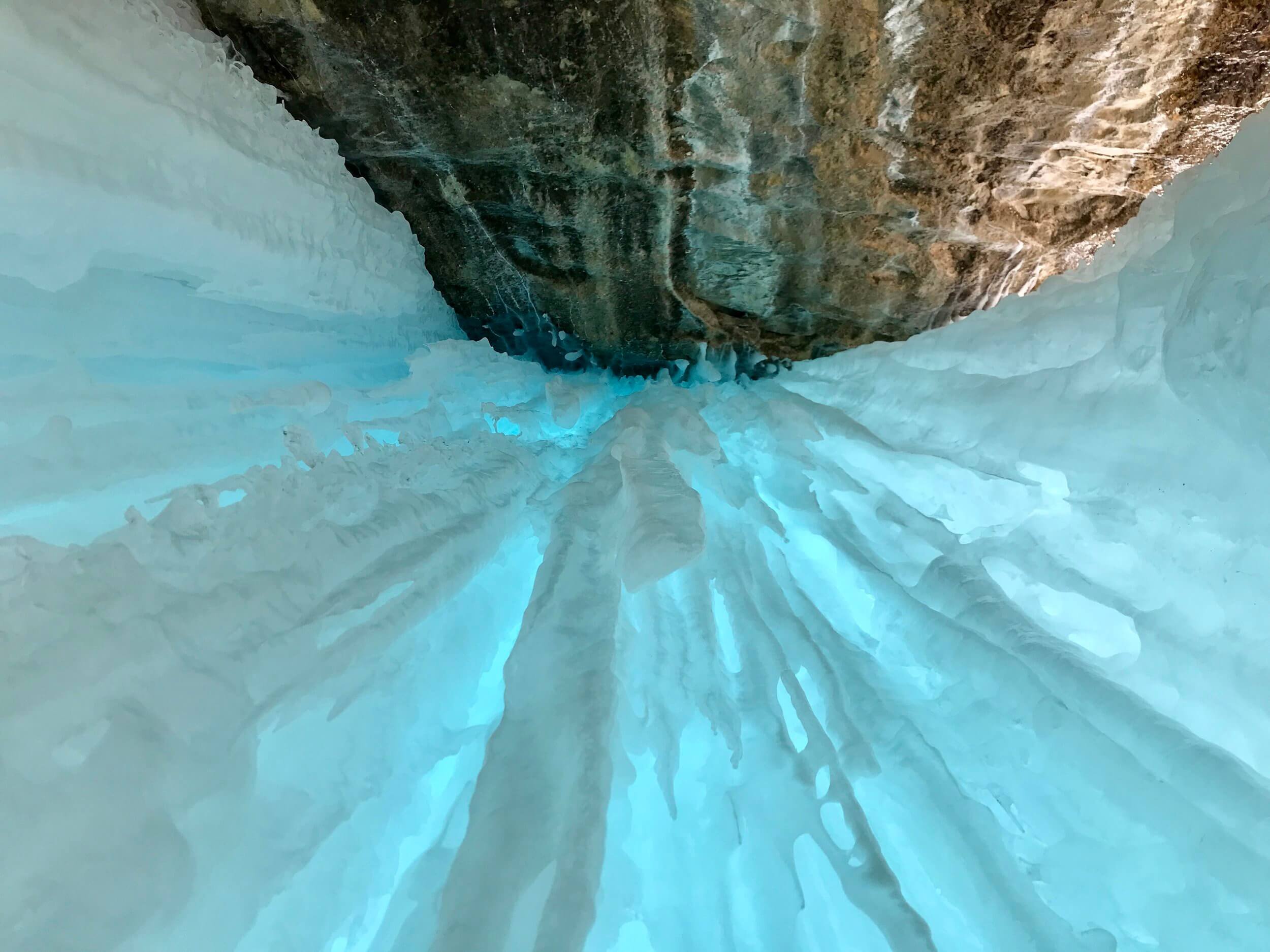
Steep Ice Climbing Clinic
The 2-day Steep Ice Climbing clinic is designed for ice climbers with previous experience who want to hone their efficiency and movement skills on steeper routes. Our expert ice climbing instructors will target and train specific areas for individual improvement. During this Steep Ice Climbing course in the Ouray Ice Park you will learn:
Review of foundational ice climbing techniques
Body positioning for steeper and three dimensional ice routes
Creative resting and recovery strategies
Day 1: We will focus on assessment of your skills, identifying and prioritizing areas for improvement. We will model proper techniques and demonstrate unique drills to address your individual needs.
Day 2: Continued application and honing of steep ice climbing strategies. We seek out a variety of terrain that challenges you and with individualized and precision based instruction you can be successful. At the end of the day we provide you with recommendations for continued technique development.
January 10 - 11, 2026
January 31 - February 1, 2026
Prior ice climbing experience is required. Climbers should be able to comfortably top-rope pitches up to WI4- in difficulty.
Montrose Regional Airport is 45 minutes from Ouray. There is NO rideshare service, you may book a shuttle service or rent a vehicle with AWD/4WD (for winter driving).
There are plentiful hotels in downtown Ouray, conveniently located in walking distance to restaurants and the town hot springs for an aprés-climb relaxation.
Climbers are responsible for providing their own personal clothing and equipment. Skyward Mountaineering may assist in supplying technical equipment with advanced notice. See recommended equipment list below:
-
Underwear: Should be comfortable for a full day of activity, synthetic or merino wool will wick moisture away from the body
Heavyweight socks: Over-the-calf winter weight for superior warmth. Layering two pairs of socks is not recommended as it may impede blood flow and make your toes colder
Warm hat: Should be thin enough to fit under your helmet
Neck gaiter: Optional, lightweight and versatile for adding warmth around ears or covering your face in windy conditions
Softshell climbing gloves: Waterproof with high dexterity. 2 pairs recommended, one midweight and one heavyweight. Guide’s midweight recommendation - Showa Temres 282-02 (size up one from normal)
Mixed climbing gloves: Optional, these highly dexterous gloves have minimal insulation and are best for warmer days, lead climbing or mixed climbing
Midweight top baselayer: Merino wool or synthetic fibers will wick sweat away. Thumb loops are recommended to keep your wrists from being exposed and your hands warmer
Heavyweight bottom baselayer
Midweight fleece jacket: An integrated hood adds warmth and weather protection
Active insulation jacket: Ideal balance of breathability and warmth for winter aerobic activity
Midweight vest: Optional, adds warmth to your core without restricting movement
Softshell jacket: Midweight with a helmet compatible hood. Should have Durable Water Resistance (DWR) coating
Softshell pants: Midweight with reinforced instep. Avoid ski pants as they are often too baggy and likely to catch on your crampons
Insulated parka: Down is lighter/more compressible and a hydrophobic treated down will insulate even when wet. Should have at least 200 grams of 800 fill insulation
-
Climbing backpack: Approximately 30 liters with ice tool attachments
Mountaineering boots: Must be rigid with toe and heel welts for full crampon compatibility
Vertical frontpoint crampons: Dualpoints are better for continuous ice while monopoints are lighter and better suited for mixed climbing
Crampon pouch: Reusing a USPS Tyvek mailing package is a cost effective option, though specific manufactured options exist and are more durable
Technical ice tools: Remove any adze attachment as this may pose an unnecessary hazard for waterfall ice climbing
Climbing helmet: Must be UIAA certified
Harness: Recommended ice clipper compatibility
Tubular belay device with round bar stock locking carabiner
48 inch (120cm) sewn nylon sling: A Personal Anchor System (PAS) can be used instead, though is less versatile
1-2 Locking carabiners: Lightweight, screwgate is easier to operate than a triple-action carabiner
1-2 Non locking carabiners: Wiregates are less prone to freezing
2 Ice Clippers: Optional
-
Sunglasses: Dimmable recommended, CAT 3 lenses w/ athletic fit
Small tube of sunscreen and SPF chap stick
First aid kit: Small, should include any personal medications
Hand warmers: Optional, for those colder days
Kula cloth: Optional, antimicrobial cloth for people who squat to pee
Pee funnel: Optional, to facilitate easier bathroom usage in a harness for people who squat to pee
Hand warmers: Optional
Fully charged phone
1-2 liters of water: A thermos with your favorite hot drink is recommended. Avoid water bladders and hoses as they are prone to puncture and freezing in a winter environment
High energy lunch and snacks: A healthy mix of fats, sugar, and protein for a full day of the on-the-go (leftover pizza or sandwiches are a great midday pick-me-up)

Based on a 2-day itinerary with a minimum of 2 participants:
$660 per climber
Includes:
2 days of instructional climbing with an AMGA trained Guide
Group climbing equipment (ropes, ice protection and anchor material)
Does Not Include:
Additional expenses associated with a change in the itinerary
Transportation
Lodging
Meals
Guide gratuity






